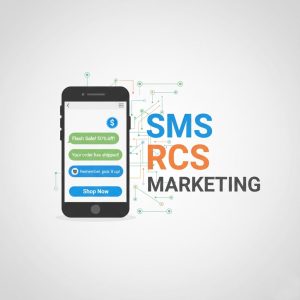Mobile Landing Page Best Practices That Actually Convert

Mobile traffic now accounts for over 60% of all web traffic, yet countless businesses still treat mobile optimization as an afterthought. Your mobile landing page isn’t just a smaller version of your desktop site—it’s often the first and only impression potential customers will have of your brand.
Creating an effective mobile landing page requires a fundamentally different approach than desktop design. Mobile users have different behaviors, shorter attention spans, and unique technical constraints that demand specialized strategies. The good news? When done correctly, mobile-optimized landing pages can dramatically outperform their desktop counterparts in conversion rates.
Prioritize Speed Above Everything Else

Mobile users expect lightning-fast loading times. Google research shows that 53% of mobile visitors abandon sites that take longer than three seconds to load. Every additional second of load time can decrease conversions by up to 20%.
Start by optimizing your images. Use modern formats like WebP or AVIF when possible, and implement responsive images that serve appropriately sized versions based on screen resolution. Compress your code by minifying CSS, JavaScript, and HTML files.
Consider implementing Accelerated Mobile Pages (AMP) for content-heavy landing pages. While AMP isn’t necessary for every page, it can dramatically improve load times for blog posts, articles, and information-dense pages.
Test your mobile page speed regularly using tools like Google PageSpeed Insights or GTmetrix. Aim for a load time under two seconds on 3G connections.
Design for Thumb-Friendly Navigation
Mobile users navigate primarily with their thumbs, creating natural “thumb zones” on the screen. The most accessible areas are the bottom center and right side of the screen for right-handed users, and the bottom center and left side for left-handed users.
Place your most important call-to-action buttons within easy thumb reach—typically in the bottom half of the screen. Make buttons large enough to tap comfortably (at least 44×44 pixels) with adequate spacing between clickable elements to prevent accidental taps.
Implement sticky navigation elements for longer pages. A sticky CTA button that follows users as they scroll ensures your primary action is always accessible without forcing users to scroll back up.
Consider the one-thumb test: can users navigate your entire landing page using only their thumb? If not, redesign your layout to improve accessibility.
Simplify Your Value Proposition
Mobile screens offer limited real estate, making clarity crucial. Your value proposition should be immediately visible and understandable within the first few seconds of page load.
Use a clear, benefit-focused headline that explains what you offer and why it matters. Avoid industry jargon or clever wordplay that might confuse users. Your subheadline should provide additional context or address common objections.
Break up large blocks of text into scannable bullet points or short paragraphs. Mobile users typically scan rather than read, so make your key benefits easy to identify at a glance.
Lead with your strongest benefit. Don’t bury your most compelling selling point below the fold—mobile users might never see it.
Optimize Forms for Mobile Input
Forms are often the biggest conversion killer on mobile devices. Complex or poorly designed forms can frustrate users and lead to abandonment.
Minimize form fields to only the most essential information. Each additional field reduces conversion rates, and this effect is amplified on mobile devices where typing is more cumbersome.
Use appropriate input types for each field. Email fields should trigger the email keyboard, phone number fields should show the numeric keypad, and date fields should open date pickers. This reduces typing effort and minimizes errors.
Implement autofill and auto-complete features. Modern browsers can automatically populate common fields like names, emails, and addresses, significantly reducing friction.
Consider multi-step forms for longer processes. Breaking a complex form into smaller, logical steps can increase completion rates by making the process feel less overwhelming.
Leverage Social Proof Strategically
Social proof remains powerful on mobile devices, but it must be implemented thoughtfully due to space constraints.
Use concise testimonials that focus on specific benefits rather than generic praise. A short quote highlighting how your product solved a particular problem is more effective than a lengthy testimonial about general satisfaction.
Display trust signals prominently. Security badges, customer logos, and certification marks should be clearly visible, especially near form submissions or purchase buttons.
Show real-time social proof when possible. Notifications about recent purchases or sign-ups can create urgency and demonstrate popularity without taking up permanent screen space.
Keep reviews and testimonials scannable. Mobile users won’t read lengthy testimonials, so highlight the most compelling quotes or use star ratings for quick credibility assessment.
Master Mobile-Specific CTAs
Your call-to-action strategy must account for mobile user behavior and technical capabilities.
Use action-oriented language that creates urgency. “Get Started Now,” “Claim Your Spot,” or “Download Instantly” work better than generic “Submit” or “Learn More” buttons.
Make CTAs visually prominent with contrasting colors and adequate white space. Your primary CTA should stand out clearly from other page elements.
Consider using mobile-specific actions. “Call Now” buttons can trigger phone calls directly, “Text Us” can open messaging apps, and “Get Directions” can launch maps applications.
Test CTA placement throughout your page. While above-the-fold CTAs are important, many mobile users scroll before converting. Multiple strategically placed CTAs can capture users at different decision points.
Implement Progressive Disclosure
Mobile screens require careful information hierarchy. Progressive disclosure helps users process information without feeling overwhelmed.
Start with your most important information and reveal additional details as users show interest. Accordion menus, expandable sections, and “Read More” links allow users to dig deeper without cluttering the initial view.
Use visual cues to indicate expandable content. Clear arrows, plus signs, or other indicators help users understand they can access additional information.
Prioritize content based on user intent. Users arriving from paid ads might need different information than organic visitors or returning customers.
Optimize for Local and Voice Search
Mobile users frequently search for local businesses and use voice search, creating unique optimization opportunities.
Include location-specific keywords and information if relevant to your business. Mobile users often search for “near me” terms or specific locations.
Optimize for conversational, long-tail keywords that match voice search patterns. Voice searches tend to be more question-based and conversational than typed queries.
Ensure your business information is consistent across all platforms. NAP (Name, Address, Phone) consistency is crucial for local search visibility.
Test Across Devices and Networks

Mobile devices vary significantly in screen size, processing power, and network connectivity. Your landing page should perform well across this diverse ecosystem.
Test on actual devices rather than relying solely on desktop browser simulation. Real devices reveal issues that simulators might miss, including touch responsiveness and network performance.
Test on slower network connections. While 5G is expanding, many users still rely on 3G or poor Wi-Fi connections. Your page should remain functional even under suboptimal conditions.
Use analytics to identify your audience’s most common devices and browsers. Focus optimization efforts on the platforms your users actually use.
Ready to Transform Your Mobile Conversions?
Mobile optimization isn’t optional—it’s essential for modern digital marketing success. The best mobile landing pages combine fast loading times, intuitive navigation, clear value propositions, and strategic conversion elements tailored specifically for mobile users.
Start by auditing your current mobile landing pages using these best practices as a checklist. Focus on the areas with the biggest impact first: page speed, CTA placement, and form optimization typically offer the quickest wins.
Remember that mobile optimization is an ongoing process, not a one-time task. User behavior, technology, and search algorithms continue evolving, requiring regular testing and refinement of your mobile strategy.





